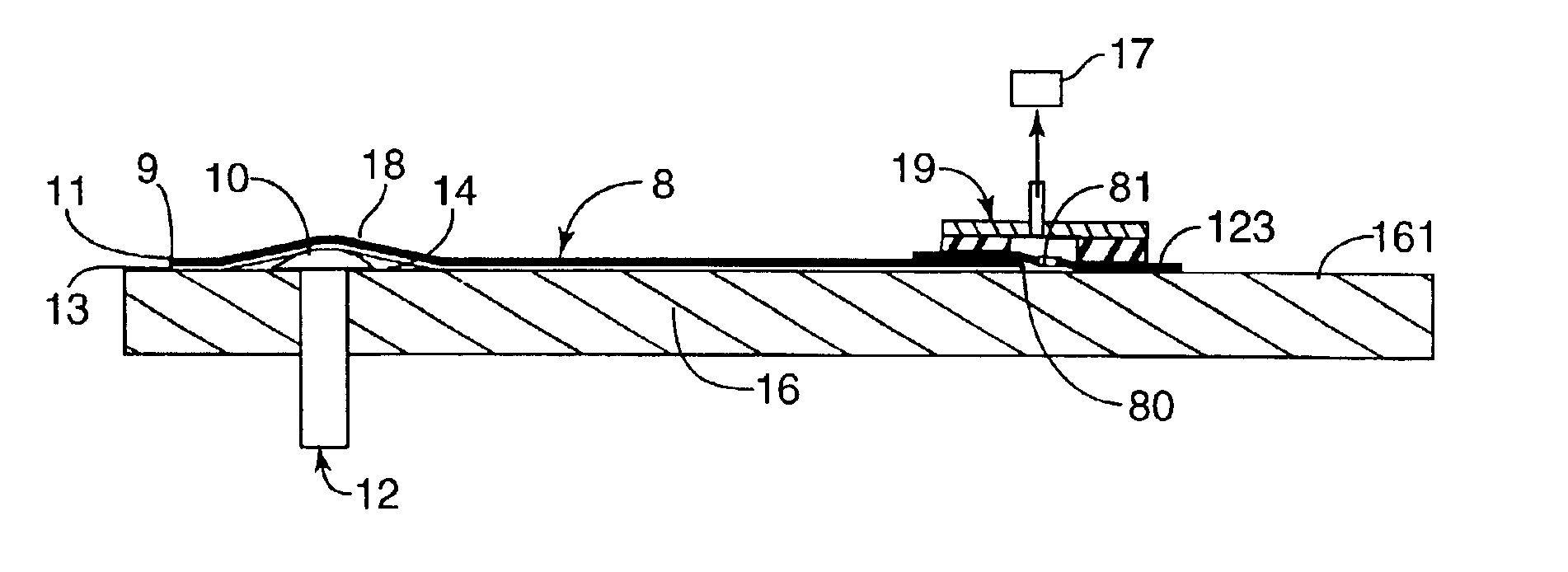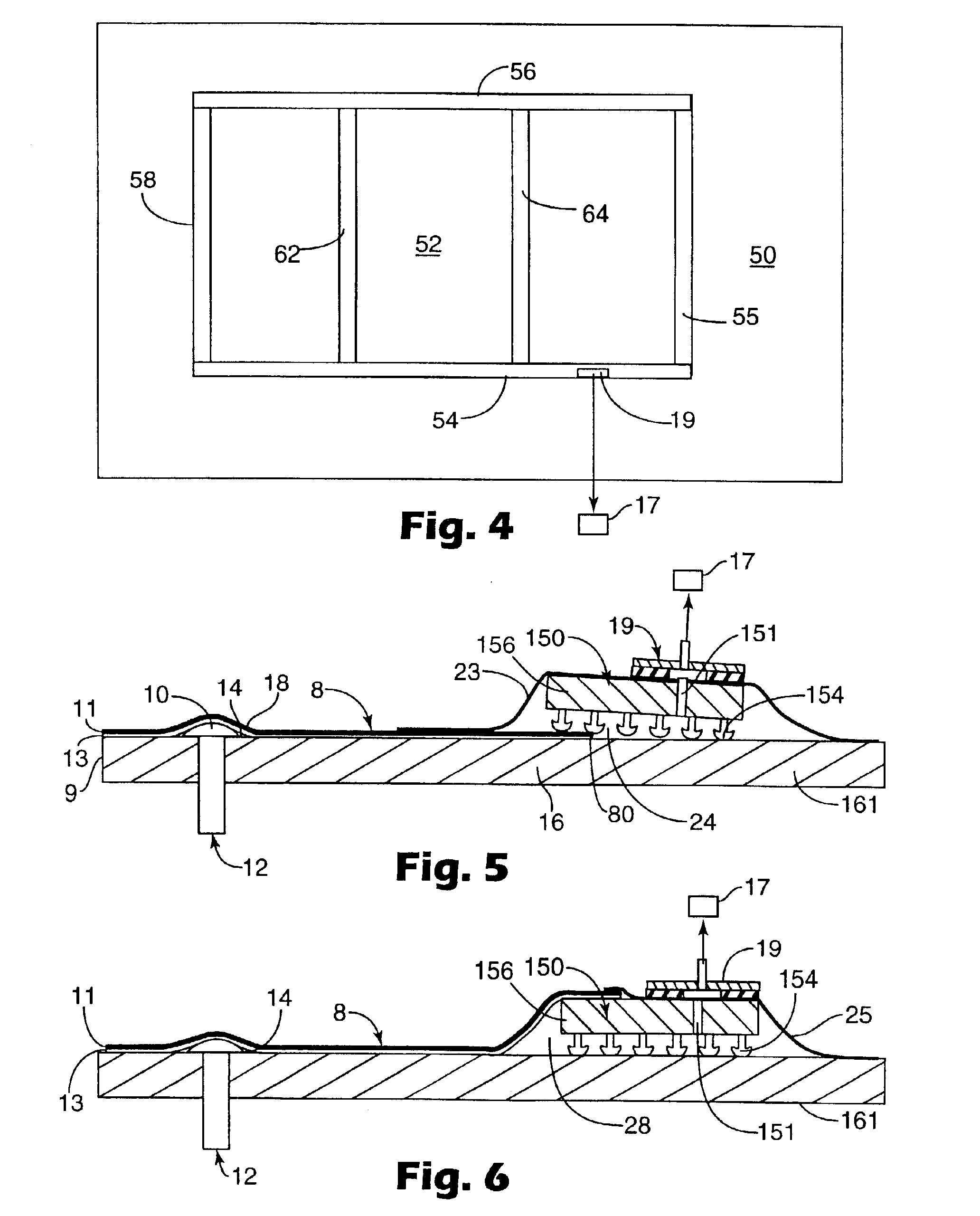Method of conforming an adherent film to a substrate by application of vacuum
a technology of adherent film and substrate, applied in the field of vacuum-based conformation of adherent film to a substrate, can solve the problems of increasing requiring not only skill, but also physical strength and endurance, and the current method is ergonomically demanding, so as to improve the conformance without the risk of surface damage, the effect of enhancing the conformance of the adherent film and allowing for greater latitud
- Summary
- Abstract
- Description
- Claims
- Application Information
AI Technical Summary
Benefits of technology
Problems solved by technology
Method used
Image
Examples
examples
Vacuum Pumps
A rotary vane vacuum pump, powered by a ⅙ horse power, electrical motor, (manufactured by Gast Mfg, a Unit of IDEX Corp, of Benton Harbor, Mich.) was used in several of the examples and is designated as “pump 1”. This pump was fitted, in the following sequence, with an air filter, air bleed valve, vacuum pressure gauge, and flexible vacuum tubing. By allowing a limited amount of ambient air to enter the vacuum system, the air bleed valve was able to adjust the vacuum level as desired. A maximum vacuum level of about 630 millimeters (mm) of mercury was obtained when the air bleed valve was closed. Unless noted otherwise, the vacuum levels reported in the examples refer to that measured by the pressure gauge mounted on the pump.
A compressed air-driven vacuum pump, commercially available from PIAB (Rockland, Mass.) as part number L28A6-B2N, was also used in the examples and is designated as “pump 2”. This pump was connected to a pressure regulator, air filter and compressed...
examples 1-12
were produced by selecting various adherent films and laminating them to painted aluminum test plates having dimensions 10.2 centimeters by 30.4 centimeters, into which four test rivets had been inserted at a spacing of 7.7 centimeters, with the rivet nearest the end of the panel being at a distance of 3.5 centimeters from the panel end. The rivet spacing was chosen to place the rivets sufficiently far apart to avoid interaction between them during the laminating process. The test plates were painted with a standard white vehicle paint of the type commonly used on semi-trailers. The rivets were of a type commonly used in the fabrication of aluminum semi-trailer bodies, having a rivet head diameter of 12 millimeters, and a rivet head height of about 1.5 millimeters. The rivets were tightly pressed into the test panels so that the heads were seated firmly against the painted surface.
In each example, a 7.6 cm×24 cm piece of adherent film was applied to the test panel using a squeegee t...
example 7
shows that good conformance prior to heat exposure was obtained when using the thinner, 180-10C. film without an overlaminate.
PUM
| Property | Measurement | Unit |
|---|---|---|
| Fraction | aaaaa | aaaaa |
| Fraction | aaaaa | aaaaa |
| Width | aaaaa | aaaaa |
Abstract
Description
Claims
Application Information
 Login to View More
Login to View More - R&D
- Intellectual Property
- Life Sciences
- Materials
- Tech Scout
- Unparalleled Data Quality
- Higher Quality Content
- 60% Fewer Hallucinations
Browse by: Latest US Patents, China's latest patents, Technical Efficacy Thesaurus, Application Domain, Technology Topic, Popular Technical Reports.
© 2025 PatSnap. All rights reserved.Legal|Privacy policy|Modern Slavery Act Transparency Statement|Sitemap|About US| Contact US: help@patsnap.com



